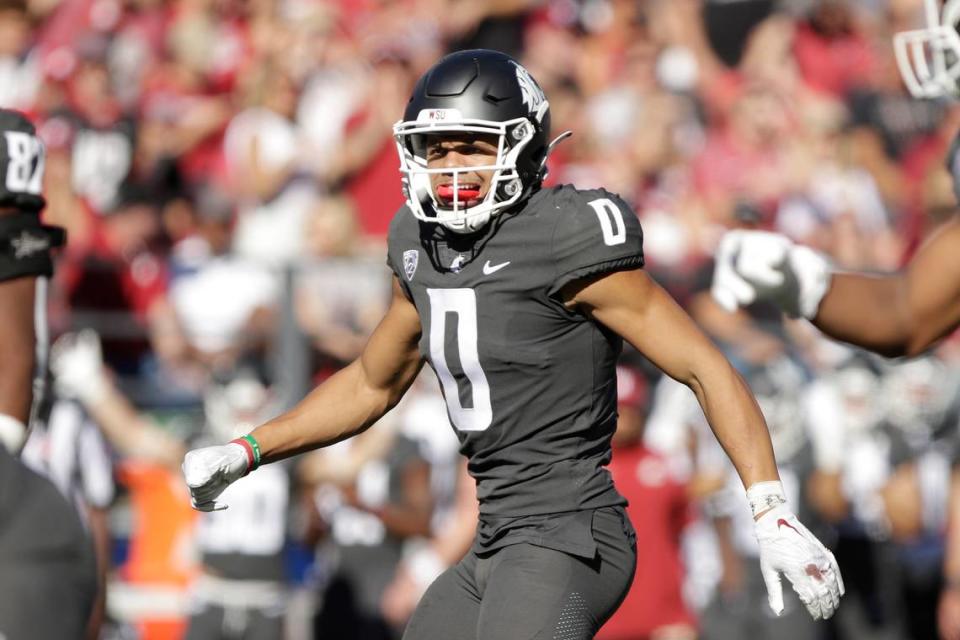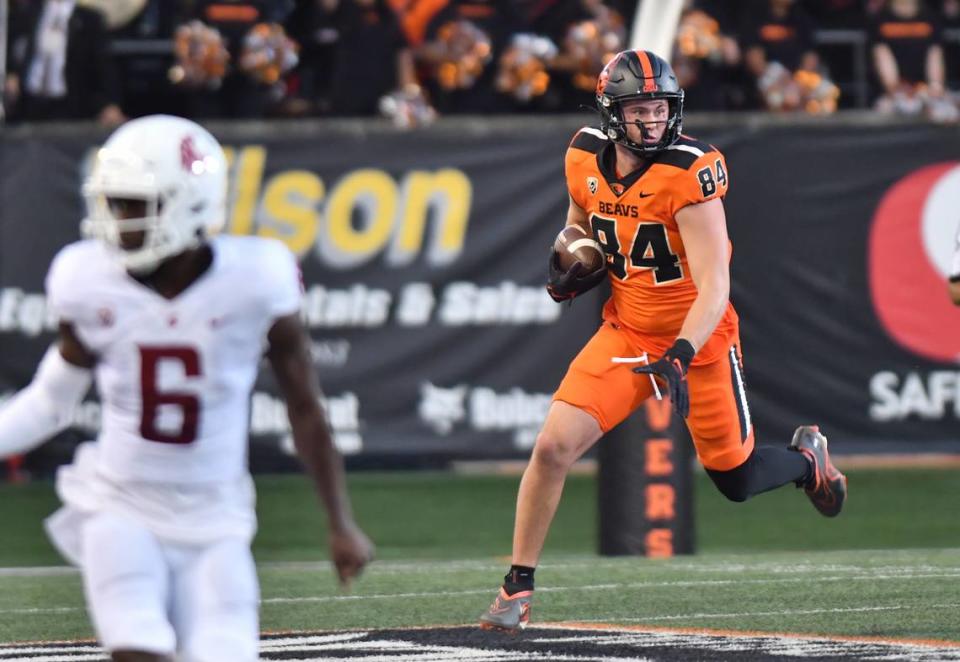WSU, OSU show unity after PAC-12 exodus. They’re leaving it all on the field Saturday
Two college football teams will have more to prove than their prowess on the gridiron this weekend.
Saturday’s matchup between Washington State University and Oregon State University in Pullman, Wash., also serves as an opportunity to highlight the abilities of these two universities — the last in the PAC-12 — as their conference continues its slow and steady demise.
In many ways, the realignment of the PAC-12 last month has brought these two public universities closer, not farther apart.
“We look at this opportunity on Saturday to really reinforce two extraordinary institutions,” said Pat Chun, WSU’s athletic director, during a Thursday news conference. “When you talk about what Saturday means, it is football at its highest level... It is inexplicable that these two programs are in this situation.”
The future of the 108-year-old conference remains unclear. Many questions have still gone unanswered and what happens next could be anyone’s guess.

Both universities are combing through the conference’s financials, contracts, revenues, assets, operation costs and liabilities to understand its viability in the coming years.
If both schools remain in the PAC-12, they will have a two-year grace period to recruit other schools to meet different membership criteria required for each sport.
At the same time, greener pastures are calling in peer conferences, such as the Mountain West, though there are no signs WSU or OSU are anywhere near close to brokering any deals to leave their flagging conference.
A superior court judge in Whitman County, Wash., approved a temporary restraining order last week to prevent departing PAC-12 members — including Oregon, Washington and Stanford, among others — from meeting until a decision can be made on who has the rights to charter the conference’s future.
OSU President Jayathi Murthy said they’re waiting for the judge to schedule a preliminary injunction and for a hearing to take place.
The Cougars and the Beavers will face off Saturday, Sept. 23, at Gesa Field in Pullman, Wash.
Kickoff is set for 4 p.m. on FOX.

All options on the table, WSU and OSU say
Both universities’ presidents and athletic directors met Thursday for a rare news conference right before the two Top 25-ranked football teams were set to face off.
In light of the PAC-12’s demise, leaders from the universities said this game was about more than just sports — it’s also about the future of collegiate athletics and higher education in the Pacific Northwest.
WSU President Kirk Schulz says he’s reminding fans that patience is the key here while they understand the full picture.
“I don’t think it’s going to take us months to get the full picture,” he said. “I’m optimistic in the next 30 days or so we’re going to have a pretty decent idea of a lot of this, and that will help our decision making and our legal strategy.
There’s a lot of background work going on. Both universities say they have been conducting a lot of preparations for different scenarios and are examining their options as they develop.
Schedules for the 2024-25 seasons will need to be drafted before the end of fall, said Scott Barnes, OSU’s athletic director.
“Lots of concerns as it relates to moving forward, but I would say as it relates to scheduling we are confident we can put together a schedule for all sports in a timely fashion that meets our needs for 2024-25,” said Barnes, whose school offers 17 sports, including a championship gymnastics team.
Chun said “flexibility is going to be critical’ in scheduling, especially as it relates to their legal action against the PAC-12 and as they review the conference’s viability.
“Everybody’s kind of watching to see how we handle it, and what types of things we do, the impact it has on us as an institution,” Schulz said. “I suspect two years from now I’ll be able to be a little more analytical about it and a little less irritated, pissed off. Talk whatever you want, but right now it’s just hard.”
What’s the impact on high school recruitment?
Chun and Barnes say the troubles with PAC-12 have only added to the difficult and competitive high school recruitment market.
“Student-athletes, first and foremost, want to know that they’re comfortable in the space and that they have a path forward. Recruiting as it relates to conference realignment is really important. Is it the most important thing in conference realignment? Not always,” Barnes said.
Chun said recruitment is one variable that is also driving them to make a decision sooner on WSU’s future in the conference.
“Ultimately, we have coaches that understand that and we’ll figure out a way to work whatever the challenge is,” he said.
No doubt the league splitting apart will play a huge role in where some of the nation’s top athletes head after high school, and WSU and OSU will likely suffer. But leaders from the universities say local athletes also take into consideration other factors, such as cost, student life and academic programs.
What happens to the Apple Cup?
Chun didn’t mince words when asked about the future of the annual UW-WSU rivalry matchup, the Apple Cup.
“We cannot look at scheduling in the future with an emotional lens. We need to look at it through a business lens,” he said.
“There are significant dollars associated with television on our side of this equation. On our side of this equation, we’ve been part of a storied rivalry — I know Oregon and Oregon State have been part of a storied rivalry — and we’ll have to make some decisions based on other factors beyond emotion, whenever that time comes,” he continued.
At the same time, Washington administrators have expressed commitment in continuing the rivalry, according to The Athletic.
Barnes said regionality “is an important component of the holistic experience our student athletes have.”
Neither school provided any sort of reassurance that their rivalries — among the oldest in college football history — would continue following the ‘24-25 realignment; Oregon’s goes all the way back to 1894 and Washington’s goes back to 1900.
A 2-college conference?
Is a two-team conference off the table for next year?
Stranger things have happened.
Chun said they’re trying to keep “as many options open as possible” and make sure they’re well-positioned to make moves once they have all the information.
Murthy said the PAC-12 is incredibly important to both these schools; OSU was one of four chartered members when it was formed back in 1915 and WSU was added not two years later.
“It’s a deep part of our identity, so there’s no question about the loss that’s felt,” she said. “The schools in the conference were great partners in academics and research, and that will certainly be missed. But I’m also confident that we’ll find other partners and other identities because as schools we are fundamentally strong... The future is not what the past was, but there is a good future for us, no question about it.”
Schulz said while this is a major shift for athletics, the realignment largely won’t affect student life and their athletes will still be performing every week.


